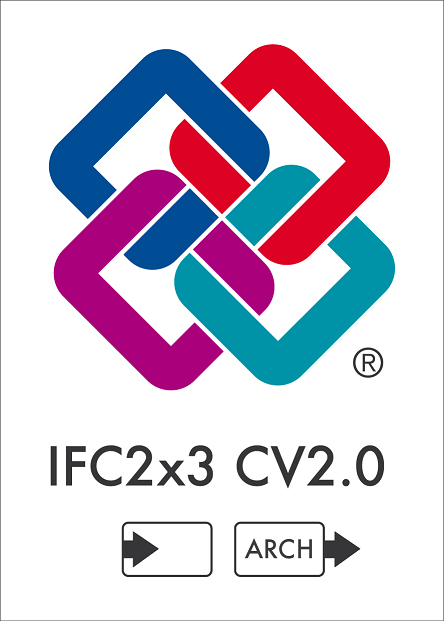
Industry Foundation Classes (IFC) are the open and neutral data format for openBIM. ArchiCAD supports the import, export and data structure of the latest IFC release: IFC2x Edition 3 (third release of the IFC 2x Platform, IFC2x3 for short) - more specifically, its latest version, the so-called Technical Corrigendum 1, published in July 2007.
An IFC View Definition, or Model View Definition, MVD, defines a legal subset of the IFC Schema and provides implementation guidance or agreements for all IFC concepts (classes, attributes, relationships, property sets, quantity definitions, etc.) used within this subset. It thereby represents the software requirement specification for the implementation of an IFC interface to satisfy the Exchange Requirements.
Model View Definitions are either defined within buildingSMART International, or by other organizations and interest group.
ArchiCAD IFC Export and Import supports the following Model View Definitions:
•The Coordination View was the first Model View Definition developed by buildingSMART International and is currently the most widely implemented view of the IFC scheme. The main purpose of the Coordination View is to allow sharing of building information models among the disciplines of architecture, structural engineering, and building services (mechanical). It contains definitions of spatial structure, building, and building service elements that are needed for coordinating design information among these disciplines, and is supported by ArchiCAD. In September 2013, ArchiCAD was certified for both import and export of the latest version: IFC 2x3 Coordination View 2.0

•The Coordination View (Surface Geometry) is a simplified publishing format (i.e. a subset) of the Coordination View. This format is suitable for viewing (since all IFC viewers support this format), design coordination, clash prevention during design, and clash checking. “Coordination View (Surface Geometry)” means that every element will be exported with its BREP (boundary representation) geometry. This method comes closest to reproducing the real shape of the element, together with its specialized sections, connections and solid operations. (However, the element’s parameters are lost, and BREP elements from an imported IFC file are transformed into non-editable elements.)
Note: In earlier versions, the Coordination View (Surface Geometry) was known as Simplified view (BREP only).
•The Basic FM Handover View is an extended version of the Coordination View (developed by buildingSMART) that defines the general requirements for design applications to enable the handover of facility management information. The basic scope can be summarized as the space and equipment list for the spatial and technical systems of a facility. Technically, the Basic FM Handover View fulfills the following requirements above and beyond those of the abovementioned Coordination View: ability to assign furnishing and equipment components to spaces (Space Containment, IFC System), to assign spaces to zones (IFC Zone), to assign a classification to spaces and components (Classification Reference), to assign manufacturer base properties to components (standard and custom IFC Properties), to assign doors and windows to spaces (Space Boundaries), to assign type information for components (IFC Type Product) and to export base quantities for all project components and spatial structures. This MVD is required in various projects defined by buildingSMART and other organizations. An example is the COBie (Construction-Operations Building information exchange), a specification used in the handover of Facility Management information. It is a spreadsheet data format for the delivery of a subset of building model information, rather than geometric model information. ArchiCAD’s BIM-quality models and IFC data exchange capabilities produces data output that is easily converted into COBie documentation, with the help of free or commercial conversion programs.
•There are several other Model View Definitions (generally the extended versions of the Coordination view) specified by organizations or development teams outside of buildingSMART International. An example is the Concept Design BIM 2010 model view definition that is supported/required by the General Services Administration (US GSA), Statsbygg (Norway) and Senate Properties (Finland). The additional MVDs require programs to provide IFC data above and beyond those of the Coordination View standard - such extra data include Classification Reference, Space Occupant, Actor, System and Time Series Schedule Assignments, and specific property sets and properties. ArchiCAD’s IFC interface provides the possibility to define, export and import these data types. As a result, users will be able to fulfill for example the GSA-specific classifications according to various OmniClass classes, Statsbygg and Senate Properties regulations.
For more information, see IFC Data Types and Working with IFC Data.
All Model View Definitions can be extended by add-on model view definitions which support additional exchange requirements:
•the Quantity Take-off add-on view adds the ability to transmit base quantities for all spatial and building elements
•the Space Boundary add-on view adds building elements to space relationships to support models in thermal and energy analysis
•the 2D Annotation add-on view supports the exchange of additional 2D element representations and annotations of building models
ArchiCAD supports all of these additional data types.
See Export Options of IFC Translators.